  |
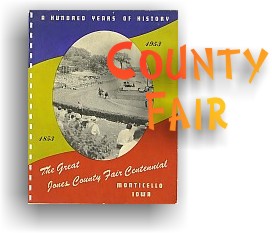 |
|||
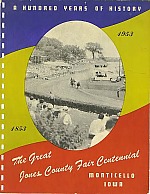
|
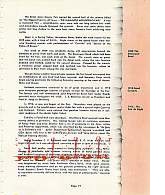 The Great Jones County Fair started the second half of the century billed as "The Biggest Event in All Iowa—THE MAMMOTH MONTICELLO FAIR." It was a mammoth Fair—Amphitheatre seats were sold out long before fair week and tremendous crowds thronged the grounds. Horse and cattle shows were prime, but hog cholera in the area kept many farmers from exhibiting their swine. The Great Jones County Fair started the second half of the century billed as "The Biggest Event in All Iowa—THE MAMMOTH MONTICELLO FAIR." It was a mammoth Fair—Amphitheatre seats were sold out long before fair week and tremendous crowds thronged the grounds. Horse and cattle shows were prime, but hog cholera in the area kept many farmers from exhibiting their swine.
Qeen L., a Spring Valley, Minnesota horse, broke the track record for the 2:35 pace with a time of 2:15¼. Night shows at the opera house were likewise breaking records with performances of "Camille" and "Secrets of the Police of Russia." Fair week of 1909 was decidedly damp, still excursionists braved the elements to arrive from north and south. The Davenport Band which had been hired for the Fair, met each train at the depot. The crowds were so great, that the band was pushed back into the depot park, where the iron fountain bubbled and frothed, aided by the natural showers. Pressed by the crowds, a trombone player stepped back and tumbled into the fountain, where he continued to blow from among the iron mermaids. Though damp weather lowered gate receipts, the Fair board announced that no indebtedness of any kind had been incurred, and Secretary Koop would begin paying premiums the following Saturday morning at the store of Messrs. Hicks and Guyan. Railroad excursions continued to be of great importance and in 1910 over thirty-one passenger coaches of people arrived for Thursday at the Fair. The famous and well remembered 53rd Regimental Band from Cedar Rapids provided music throughout the week. J. E. Bateman served as President and Fred W. Koop as Secretary. In 1915, a new era began at the Fair. Electroliers were placed on the grounds and in the amphitreatre, and a Night Fair with a special Night Carnival was featured. Patrons were advised that gasoline lanterns would be in constant readiness if the electric lights failed. Exhibits in Floral Hall were abundant. Miss Elaine Reed received more than twenty dollars in premiums. Mrs. George Guyan won on numerous specimens of Fancy Work and Eliza Zeadow had a list of premiums in the Jams, Jellies and Preserves department, which was described by the newspaper as "as long as a plumber's bill." Junior department competition became scrambled and Clark Byam won first in the Coffee Cake division and Vera Alcorn swept the Manual Training division. Under President C. P. Rockstad and Secretary E. G. Hicks the Fair and Night Carnival, as it was advertised, continued to grow in spite of war clouds. Floral Hall entries were present in enthusiastic numbers. Mrs. Henry George of Monticello had nineteen winning entries of hand painted china and Huberta Livingston of Hopkinton displayed more than fifty varied exhibits, ranging from art and fancy work to baked goods and miscellaneous items, such as "Menu for Threshers" (25 cent prize) and a collection of Kodak views. Morale was heightened by music from Professor Otto's Band, which gave concerts every morning downtown and on the grounds preceeding the night carnival. Frank Royden's Scotch Grove boys' band, also entertained—"They are able to reproduce unusually difficult music with the ease of professionals," reported a critic. |

| ||
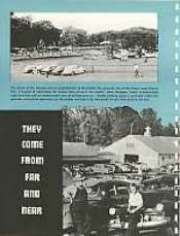 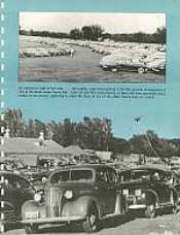 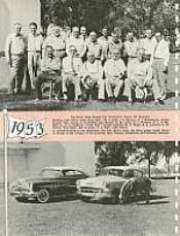 | ||||
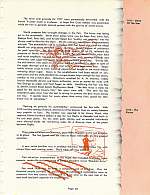 |
The town and grounds for 1917 were patriotically decorated, with the French Tri-color much in evidence. A large Red Cross exhibit was prominent, while the Fair in general, seemed quieter with the gravity of world events.
World progress had wrought changes in the Fair. The horse was losing out to the automobile. Horse show prizes were won by Peter Kurt, John Kurt, George Buol, Peter Bell, and Arnold Egger but "quality, not quantity" was the phrase used to describe the show. On the contrary, newspaper announcements advised, "The automobiles are so numerous now that those who sit at the wheel should not only drive slow but overly cautious. Kindly inquire of policemen for park spacing." The Fair of 1918, held August 20 to 23, reflected the pressure of World War on the home front. Patriotic observances were held and much emphasis was put on food conservation with canning methods and wheat-less and sugar-less meals being demonstrated every day. "Candy Bill, the old veteran who caters to the sweet tooth of childhood, is there in spite of the sugar shortage and he is selling real taffy," ran a local news item. "Major Noble Winner sticks to fresh buttered popcorn and laughs at the stand fellows worrying about sugar. Boxes in the amphitheatre had been rebuilt on concrete piers and the stalls divided into compartments large enough for four chairs, similar to the present plan. Occupants watched Dr. A. M. Maurice, widely known Monticello dentist and horse enthusiast, serve as starter for races with Ray George as judge and Fred Fagan as clerk. Headlining the fair was Roy D. Smith's famed Royal Scotch Highlanders Band. "The Best music is none too good for the Jones County Fair." fair goers were told. "This year the fair association goes clear 'over the top' in giving its patrons the best music money can buy. It spends more for music alone than many fairs spend for their entire line of attractions." "Parking on grounds for automobiles," announced the fair bills. With 1919 and the coming of peace, aeronauts of the heavier than air variety became very popular at fairs. The earliest was reported to be Jimmy Ward, who received fifteen hundred dollars a day for two flights to Cascade and back in his one man plane. For ten cents each, daring and air-minded individuals were allowed inside the restraining ropes for a close-up view of the plane between flights. Then came a Lieutenant Obernaur, stunt flyer, in a new Curtis two passenger bi-plane. The fair board sold ten rides to those wishing to try this unusual sensation. A new swine pavilion was in evidence this year, built of hollow tile, with cement floor and running water. There were 127 hog entries. Free attraction entertainment of the Night Fair included fireworks, band concerts, vaudeville and a showing of Charlie Chaplin's movie "Shoulder Arms." Fair week 1920 was, for once, a complete week of sunshine. Over ten thousand people crowded the grounds on Thursday, and automobiles were so numerous that late comers were forced to drive clear to the east side of the race track and park opposite the amphitheatre. |
|||
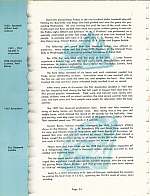

|
Dyersville played Ryan Friday in the two hundred dollar baseball play-off. Pitching for Dyersville was Koop who had pitched and won the game the preceeding Wednesday. He was winning 8-6 until the last of the ninth when he finally tired and Ryan pushed three more runs across without getting a man out. On Friday night, Gilbert and Sullivans' "H. M. S. Pinafore" was performed, on a specially constructed seventy foot stage, by a cast of over two hundred local people. In principle rolls were T. S. Lazell, Mrs. C. G. Thomas, Mrs. F. J. Kay, Mrs. Harry Lang, Vincent Balcar, John Liddy, O. B Crane and Eugene DeWitt.
The following year more than five thousand dollars was offered in premiums. Mary Locher and Ted Koop, 1953 President of the National Press Club in Washington D. C., served as assistant secretaries in Floral Hall. The 1926 Fair was filled with the gaity of the '20's. J. Leroy Farmer organized a booster trip, with fifty cars and a band, Masqueraders and other entertainers, to inform neighboring towns about the Charleston Contest, Ford Relay and other amateur competition. The Ford Relay consisted of six heats and each contestant needed two Fords, minus self-starters, to enter. Instructions were to race one-half mile in the first car, get out, crank the other car, and complete the heat. How many finished the race and how many wrenched backs resulted is not on record. After many years of discussion, the Fair Association decided in 1927 that the Fair should be held during the last full week in August from that time on. This proved popular immediately. Field work and harvest were nearly completed, children were still on school vacation, the most severe summer heat was over, and both town and farm people were ready for relaxation after the busy summer. The 1927 Fair featured professional races. Horse race fans watched a string of derby horses run fourteen races. Also racing was a two year old saddle horse, which claimed the record of 59 seconds for the half-mile. New and exciting were dog races run by a pack of Whippets from Calgary, Canada. Their reported speed was 175 yards in 9 seconds. Farmer Burns, famous wrestler, managed the Wolf Company's athletic shows on the Midway. Dr. J. W. Benadom's Fife and Drum Corp, assisted by his sons, and Charles Clark of Maquoketa and Frank Byerly of Anamosa, appeared that year and are still recalled by many. Benadom had trained a Robin, caught the previous spring, to sit quietly on his fife as he played. The two were a familiar sight on Monticello streets for several years. Heavy rains and high winds got the 1928 Diamond Jubilee exposition off to a tempestuous start. Over a thousand dollars damage occurred as hail riddled and flattened tents. The city made special efforts for the Fair's 75th birthday. A proclamation urged that merchants install appropriate window displays, that the city scrub the paving like a "Dutch Kitchen," and that private citizens start lawn mowers to "slick-up" the long grass in the corners. Leola A., a mare belonging to Dr. Loes of Dubuque, celebrated the occasion by pacing the local track in 12:12¼, upsetting the 12:13½ mark of many years standing. |
|||
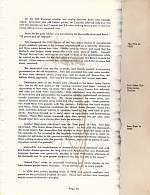 |
On the ball diamond another hot rivalry between Ryan and Cascade raged. Seventeen year old Kobza, pitcher for Cascade, allowed only five hits and one earned run, but Cascade lost 3-0 after making three errors in the first inning letting in two unearned runs.
Music for the gala Jubilee was provided by the Monticello Municipal Band - "32 pieces and all talented." Fire staggered the 1930 edition of the Fair, when flames of unexplained origin, suddenly glowed in the wooden amphitheatre on a Saturday afternoon, just three weeks before Fair time. Flames were so intense and rapid that the platform and judges stands across the track were charred badly. Kenneth "Gump" Ferring's car, standing on the track in front of the amphitheatre while he worked on the track for the approaching Fair, caught fire before it could be moved. Within twenty minutes only the concrete piers on which the structure had stood, remained. The Association took the loss in stride, and quickly erected a temporary grandstand on the old foundation. Free acts presented that year were notable, as they changed nearly every day, and an eight girl chorus line, the Melody Maids, appeared. This was the first Gorgeous Girl review seen here. Depression years of the Thirties were reflected in the Great Jones County Fair, just as the lush years of the "roaring twenties" had been. Instead of succumbing to lean days, as many Fairs did, the Jones County Fair adjusted, and rode out hard times successfully. One adjustment was the substitution of local stunts and personalities for expensive outside, professional attractions usually associated with the Fair. The racing program, for many years, consisted of farmers' amateur horse races and other novelty races. Good presentation made these very popular with Fair patrons. Politicians like Louis Murphy and Henry Field, opposing candidates for United States Senator, found Fair week audiences listened intently to speeches foretelling the road back to prosperity. Emphasis focused, as in early years, on agricultural and homemaking exhibits. Floral Hall entries increased more than twenty five per cent, even though other fairs were closing their halls for economy. Another Depression adjustment was the "free gate" of 1932. Fair bills advertised, "The Great Jones County Free Fair!" In line with the Depression the Jones County Fair Association has decided to throw open the gates of the fair grounds on the occasion of the regularly scheduled fair and to make no charges for admission to the grounds except for automobile entrance charges to those wishing to drive onto the grounds. "However, there will be plenty of parking space outside the grounds." Meanwhile, the amphitheatre at Anamosa had been destroyed and with this further discouragement, the long time rival Anamosa fair was abandoned. Anamosa business men generously decided to close Wednesday afternoon of the Monticello fair "to give greater support to the only fair left in the county." "Hibred Corn" made an unusually interesting and timely display at the Farm Bureau project booth, that year. It was entirely new to many people. In 1934 beef entries doubled those of 1933 and special emphasis was placed on the pure-bred livestock division. Floral Hall exhibits also increased despite severe Midwestern droughts. |
|||
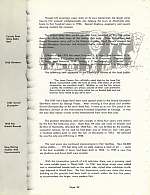 |
Though still seventeen years short of its own Centennial, the Great Jones County Fair entered wholeheartedly into helping the town of Monticello celebrate its first hundred years in 1936. Special displays, pageantry and square dancing marked the occasion.
The largest baby beef exhibit yet seen here, consisted of fifty-five calves shown by thirty-three boys of the county that year. Victor Richardson had Grand Champion dairy calf in the Holstein division, Floyd Sievers showed the Grand Champion Guernsey and Maynard Kuhns showed the Grand Champion Brown Swiss. Officers of the 1936 Fair were: President, L. E. Hoag; Vice President, H. W. Stuhler; Secretary, S. E. Locher; and Treasurer, H. M. Carpenter. Directors were: L. E. Hoag, Max Wortman, H W. Stuhler, J. C. McConaughy, J. J. Locher, T. J. George, H. M. Carpenter, Jr., Harry Rodman, M. F. Hogan and C. A. McLaughlin. The following item appeared in the Centennial edition of the local paper:
The 1937 fair's baby beef show took special pride in the Grand Champion Shorthorn shown by George Fraser. After winning a first place and another Grand Championship at the Iowa State Fair, it went on to win first place in the Shorthorn division at the International Livestock Exposition at Chicago. It was the only blue ribbon winner at the International from Iowa that year. The greatest attendance and cash receipts in thirty-four years were drawn by the Fair the following year. Mate Rice, 89 year old uncle of Charles and Ed Rice of Monticello, attended the 1938 Fair. He was thrilled by the bustling, successful venture, for he said he had been one of thirty-six men who gave a hundred dollars each to start the fair at Monticello in 1874. He believed he was the only one still living in 1938. The next years saw continued improvements in Fair facilities. New $2,500 racing stables . . . 170 feet long with 16 stalls making a total of 43 . . . some of the best available in Iowa, had been built in 1938. In 1939 a new free act platform and band shell were erected. With the tremendous growth of 4-H activities, there was a pressing need for more exhibit space in Floral Hall. In 1941 two large wings were added and a streamlined façade built on the south side, styled after exhibition buildings featured in World Fairs. The Fair Association could now claim that every building on the grounds had been built or re-built within the last five years, to accommodate the larger, more modern Fair. |

|
||


© Copyright 1997-2013, The Art Department, © Copyright 2014-2020, Richard Harrison.
| ||||
